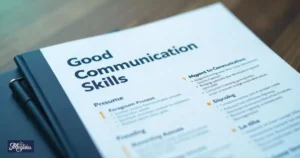“Exploring alternatives to ‘Not Only’ can enrich your communication.”
In the English language, certain phrases hold significant weight in our expressions. One such phrase is “not only.” It often introduces a powerful point, emphasizing additional information. However, using the same phrases repeatedly can lead to dull writing. Therefore, exploring other ways to convey the same meaning can breathe life into your communication.
Imagine a world where every conversation feels fresh and engaging. When you replace “not only” with varied expressions, you invite your audience into a more dynamic interaction. Whether you’re writing an essay, crafting an email, or simply chatting with friends, using alternatives can make your message clearer and more impactful.
So, let’s dive into 35 alternative phrases to “not only” that can elevate your writing and speaking skills. This guide will not only offer new phrases but will also provide scenarios and additional insights on using these expressions effectively.
1. “Besides”
Scenario: When discussing healthy eating, Emma said, “Besides eating fruits and vegetables, it’s essential to stay hydrated.”
Subject Explanation: “Besides” indicates that additional information will follow. It’s a smooth transition into another point, making it perfect for conversations about various topics.
Additional Tip: Use “besides” when you want to add supportive ideas. It creates a flow in your speech that keeps the audience engaged.
2. “In addition to”
Scenario: Mark stated, “In addition to his engineering degree, he has a minor in business.”
Subject Explanation: “In addition to” clearly states that what follows is an extra piece of information, enhancing the main idea being presented.
Additional Tip: This phrase works well in academic and formal writing, adding a professional touch to your statements.
3. “Moreover”
Scenario: During the presentation, Sarah noted, “Moreover, the results showed a significant improvement in performance.”
Subject Explanation: “Moreover” is used to introduce an additional point that strengthens the argument. It adds weight to what has been said.
Additional Tip: Employ “moreover” in persuasive writing to emphasize the importance of the additional information being shared.
4. “Furthermore”
Scenario: Tom said, “Furthermore, this new policy will benefit all employees, not just the management team.”
Subject Explanation: “Furthermore” adds more depth to a statement, indicating that the speaker has more valuable information to share.
Additional Tip: This phrase is particularly useful in essays and reports where clarity and detail are essential.
5. “As well as”
Scenario: Lisa remarked, “As well as being an artist, she is a talented musician.”
Subject Explanation: This phrase connects two related ideas, showing that both points are important and deserve attention.
Additional Tip: Use “as well as” in informal settings to keep conversations light while adding depth.
6. “Not to mention”
Scenario: David pointed out, “Not to mention the cost, the time commitment is also significant.”
Subject Explanation: This phrase emphasizes additional points that might be overlooked. It’s casual yet effective in conversations.
Additional Tip: It’s perfect for friendly chats or discussions where you want to make sure all angles are considered.
7. “Along with”
Scenario: Jessica explained, “Along with his qualifications, his experience sets him apart from other candidates.”
Subject Explanation: “Along with” implies that there is something extra that enhances the main idea.
Additional Tip: This phrase is great for resumes or CVs to highlight multiple strengths.
8. “Plus”
Scenario: “We have great coffee, plus, the atmosphere is fantastic!” said Alex.
Subject Explanation: “Plus” is a simple way to add information. It’s informal and easy to incorporate into everyday conversation.
Additional Tip: Use “plus” in casual settings to keep the mood light and engaging.
9. “Additionally”
Scenario: “Additionally, we offer free shipping on orders over $50,” said the store manager.
Subject Explanation: “Additionally” functions similarly to “moreover” and is ideal for formal writing. It introduces extra details.
Additional Tip: This phrase fits well in business communication to add professionalism.
10. “What’s more”
Scenario: “What’s more, the movie received excellent reviews from critics,” Emily mentioned.
Subject Explanation: This informal phrase adds excitement to the statement, creating a sense of anticipation.
Additional Tip: Use it in casual conversations to keep the dialogue lively and engaging.
11. “On top of that”

Scenario: “On top of that, she’s fluent in three languages,” said Michael about his sister.
Subject Explanation: This phrase adds emphasis and conveys that the following information is noteworthy.
Additional Tip: Great for informal discussions when you want to make a point more emphatic.
12. “As a bonus”
Scenario: “As a bonus, every purchase comes with a free gift,” the salesperson announced.
Subject Explanation: This phrase indicates an added advantage that enhances the main offer.
Additional Tip: Use it in marketing to attract attention and encourage purchases.
13. “Coupled with”
Scenario: “Coupled with his dedication, his skills make him an ideal candidate,” stated Jenna.
Subject Explanation: This phrase highlights how two elements work together to create a stronger impact.
Additional Tip: It’s effective in business contexts where collaboration is key.
14. “In conjunction with”
Scenario: “In conjunction with our partner, we launched a new initiative,” reported the project manager.
Subject Explanation: This formal phrase indicates that two ideas are linked together, creating a stronger foundation.
Additional Tip: Ideal for academic and professional writing to demonstrate partnerships or relationships.
15. “Together with”
Scenario: “Together with my colleagues, I achieved the project goals,” said Jason.
Subject Explanation: This phrase emphasizes collaboration, showing that multiple elements contribute to the outcome.
Additional Tip: Use it to highlight teamwork in both personal and professional settings.
Other Ways to Say “Quick Learner on a Resume”
16. “Apart from”
Scenario: “Apart from his technical skills, he also has great leadership qualities,” Maria noted.
Subject Explanation: This phrase indicates that there is something additional to consider, enriching the discussion.
Additional Tip: It’s perfect for interviews or discussions where you want to present a well-rounded view.
17. “Not just”
Scenario: “She’s not just an athlete; she’s also a mentor,” explained Jake.
Subject Explanation: “Not just” emphasizes that there is more to someone or something than what meets the eye.
Additional Tip: Use this phrase to draw attention to hidden qualities in casual conversations.
18. “In tandem with”
Scenario: “In tandem with our new strategy, we expect higher sales,” said the marketing director.
Subject Explanation: This phrase shows that two ideas or actions are happening together, creating synergy.
Additional Tip: Use it in business discussions to illustrate coordinated efforts.
19. “Equally important”
Scenario: “Equally important, the project’s success relies on teamwork,” stated the team leader.
Subject Explanation: This phrase underscores that multiple points are of equal significance, ensuring no single idea overshadows another.
Additional Tip: It works well in persuasive writing to balance different viewpoints.
20. “Likewise”
Scenario: “The first book was popular; likewise, the sequel has received great reviews,” observed Nora.
Subject Explanation: “Likewise” indicates that the following statement is similar or related to the previous one.
Additional Tip: Use it to draw comparisons in both writing and speech to maintain continuity.
21. “Correspondingly”
Scenario: “The team improved its performance; correspondingly, sales increased,” noted Kevin.
Subject Explanation: This formal phrase is useful in academic contexts, linking cause and effect.
Additional Tip: It’s effective in reports or presentations to illustrate relationships between concepts.
22. “As much as”
Scenario: “As much as I love pizza, I can’t eat it every day,” laughed Rachel.
Subject Explanation: This phrase adds emphasis and indicates that one idea is significant in relation to another.
Additional Tip: Use it in casual settings to express personal opinions or preferences.
23. “In a similar fashion”

Scenario: “In a similar fashion, the second experiment yielded positive results,” explained the researcher.
Subject Explanation: This phrase connects two related ideas, showing how they correspond with one another.
Additional Tip: Great for academic writing where structure and clarity are crucial.
24. “By the same token”
Scenario: “By the same token, he’s also an excellent cook,” said Hannah.
Subject Explanation: This phrase suggests that if one statement is true, then another must also be valid.
Additional Tip: Use it in debates or discussions to reinforce arguments effectively.
25. “On that note”
Scenario: “On that note, let’s discuss how we can improve our outreach efforts,” suggested the manager.
Subject Explanation: This phrase transitions smoothly to a new point, creating a connection between ideas.
Additional Tip: It’s useful in meetings to keep the discussion flowing.
26. “As indicated by”
Scenario: “As indicated by the recent survey, customers value quality over price,” stated the analyst.
Subject Explanation: This phrase presents additional evidence that supports the main point being made.
Additional Tip: Ideal for reports and analyses to validate statements with facts.
27. “In light of”
Scenario: “In light of recent events, we need to adjust our strategy,” suggested the consultant.
Subject Explanation: This phrase shows that the upcoming information is based on recent developments or discoveries.
Additional Tip: Use it to introduce new perspectives during discussions.
28. “Complementing”
Scenario: “Complementing her studies, she volunteered at a local charity,” remarked Ryan.
Subject Explanation: This phrase indicates that one idea enhances another, providing additional value.
Additional Tip: Effective in personal statements to show well-roundedness.
29. “In the same way”
Scenario: “In the same way, she supported her peers, her team also rallied around her,” noted Peter.
Subject Explanation: This phrase establishes a clear relationship between two actions or ideas.
Additional Tip: Use it to create parallel structures in writing for better flow.
30. “To add to that”
Scenario: “To add to that, the company is launching a new product line,” explained Clara.
Subject Explanation: This phrase is informal and adds a friendly tone while introducing new information.
Additional Tip: It’s great for casual conversations where you want to keep things light.
31. “In parallel”
Scenario: “In parallel with the main project, we are also working on a new initiative,” said the project manager.
Subject Explanation: This phrase indicates that two actions are occurring simultaneously, highlighting their relationship.
Additional Tip: Use it in project management discussions to show coordination.
32. “In concert with”
Scenario: “In concert with the new policy, we will offer training sessions,” announced the HR director.
Subject Explanation: This formal phrase indicates collaboration between two or more elements.
Additional Tip: Use it in official communications to enhance professionalism.
33. “Coexisting with”
Scenario: “Coexisting with nature is essential for sustainable development,” pointed out the environmentalist.
Subject Explanation: This phrase emphasizes that two ideas or elements can thrive together.
Additional Tip: Great for discussions on environmental topics or community projects.
34. “With that in mind”
Scenario: “With that in mind, let’s move forward with the plan,” said the leader.
Subject Explanation: This phrase indicates that the upcoming information is based on previous points discussed.
Additional Tip: Use it to transition between ideas while maintaining continuity in conversation.
35. “In conjunction with”
Scenario: “In conjunction with my studies, I also work part-time,” said Laura.
Subject Explanation: This phrase shows that two elements are linked and are part of a bigger picture.
Additional Tip: Ideal for resumes or discussions about balancing responsibilities.
Pros and Cons
Pros
- Using alternatives to “not only” enhances clarity and variety in writing.
- It engages the audience more effectively and keeps conversations interesting.
- It allows for greater flexibility in expression, accommodating different contexts.
Cons
- Overusing alternatives can confuse the audience if not used properly.
- Some phrases may feel too formal or out of place in casual conversations.
- It requires a good understanding of context to choose the right alternative.
Conclusion
Finding alternatives to “not only” is an excellent way to enhance your communication skills. The phrases listed above can enrich your writing and speaking, making your ideas clearer and more engaging.
By incorporating these alternatives, you can create a more dynamic and lively dialogue, ensuring your audience remains interested. So, start practicing these alternatives today, and watch your communication flourish!

I’m Jane Austen, a language expert at Minglishs, dedicated to helping learners master English through engaging and accessible content. My passion for literature and teaching drives me to make language learning both enjoyable and effective.










